|
A TALES OF TWO POCKETS
|

|
|
photo by sabine pigalle
|
One detail is popping up on all runways for winter 2012-13, and it is the return of the patch pocket: a bit of rectangular cloth or skin that is placed on the surface of the garment. Bold, graphic and functional these pockets that are roughly patched on the front or side of the garments are standing out and grabbing attention. Especially since the designers are using all tricks to make them prominent. They are underlining the pockets with piping and binding, they are giving them volume with bellows which make them even more frontal and dimensional. The pockets are in patent on leather or in leather on tweed, in denim on pattern or in pattern on pattern. It is a new functional feature that will allow us women to once again put our hands in our pockets, further re-emancipating our behaviour.
The reign of the dress as the sole form of seduction will be broken and abdicated in favour of separates with structure, empowered with patched pockets to make the point and voluminous business bags to go to work or party.
The Burberry collection by Christopher Bailey for next autumn/winter is all constructed by and around the pockets that are patched on and almost floating giving a peplum- power to shape. This daring use of pockets is going to be an incentive to other designers to follow the lead for next spring/summer. After all summer is all about let go and easy style and therefore the pockets will express this perfectly; safari pockets, military pockets, naval pockets, shirting pockets and all other pockets you can think of. A pocket of ideas to reveal a change of time. To be continued...
Lidewij Edelkoort
Patch pockets are also featured in our new Key trend book for autumn / winter 2013-14, available through your local Trend Union agent.
|
|
|
|
|
SHARE > POSSESSION
|
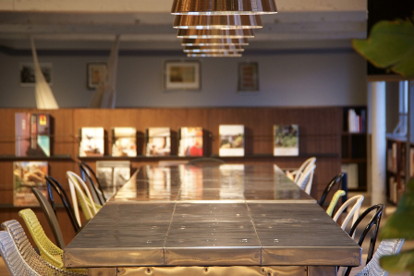
|
|
photo by the share
|
|
When we fall in love with something, the desire of possession naturally comes up in our mind: “We want to have it in our hand…”
But slowly and dramatically, things seems to have changed today. The younger generation especially feels almost the same happiness (sometimes even more happiness) in the idea of “sharing” compared with “possession”. I often see the word “share” in town, on the cover page of magazines, on the web, in fashion and so on. Just 3 min walk from our Tokyo office, there is a new building called “the share”. Its concept is “TOKYO NEW SHARE STYLE” and there are offices, apartments and shops in one building, trying to streamline information, creativity and human resources.
The idea of sharing a house may not be so new in Europe or elsewhere, but it is a very new movement in Japan since many Japanese people tend to guard their own privacy. As I interviewed several people who chose this “share style”, they said it was because they did not feel lonely and it was more practical and fun. Also the word “share” is in fashion, a keyword that seems to be used as a symbol of happiness. In a magazine whose target married female readers are around 30-40 years-old, we find the title “share the clothes with your husband”, proposing the idea of wearing one’s husband’s shirts and sweaters in boyish style. Although it may seem to imply the “boyfriend” style we all have known, its new meaning is the expression of happiness in having a partner in life and love.
From these two examples, what we see is that people want to have a certain kind of relationship and connection with others. In having such a relationship, we share. Sharing is the starting point of real possession. One reason behind this may be the influence of last year’s disaster, and also the current unstable economic situation. Actually, after last year’s earthquake, the number of marriages increased since many people realized that they don’t want to die alone. As the economic situation has been slowing down for long time, having a trustful partner can be an easy icon of happiness for women. At the same time, young generations are getting used to sharing with others since they share data and music via the web.
Many factors can be the reasons behind this new sharing movement in Japan, but I can say it will be a creative and peaceful future if we can share happily.
Kaori Leyasu
www.the-share.jp
|
|
|
|
|
TO UNDYE FOR…
|
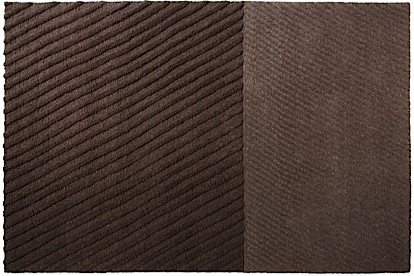
|
|
photo by bartoli design for nodus
|
|
The black outsider sheep of the flock is regularly removed in farming (like in life!), so as not to taint the much sought-after white fleece of the bale. Interestingly, the ancient genetic heritage of sheep leads to brown and black colours, although man still endeavours to eradicate the dark ones in a quest for better dying grounds.
Endearingly and passionately, for over twenty years, a secluded breeder in New Zealand has made it their business to rear only black merino sheep, producing an amazing undyed wool that is exclusively bought by Loro Piana to create its luxurious Pecora Nera texiles.
At a time of ecological awareness amongst consumers, the idea of natural and vegetal dyes is experiencing a revival: we are trying to get closer to nature through healthier fibres. The beauty of these hues is long-lasting, opening up the possibility for well-being collections in different sectors. For animal fibres, this means cream cashmeres, white silks, brown yak yarns, murky mohairs, rust vicuñas and camel camels.
Perhaps the best example of this in the interior world has come from Nodus, the reputed rug maker based in Italy. Among its many recent achievements, the company’s design-savvy hand has seen craft techniques revived in Portugal to produce Forma Fantasma’s Migration carpets, and engulfed a crowd of Brazilian rag dolls in a green lawn to create the Campanas’ Circus.
The Himalayan Undyed collection is the latest project close to the heart of Nodus director, Andrea Galimberti. Hand-made in Nepal, eight bas-relief designs have been created using undyed wools ranging from cream to brown and almost black. The wandering flocks are reared by nomads in the Tibetan highlands 5000 metres above sea-level, hand-woven with large knots into simple geometric shapes and patterns.
The yarns are unprocessed by chemicals, washed only in water to retain their natural characteristics and much of their lanolin. The result is an enticing tactile landscape on which to walk bare-footed; a beauty so overwhelmingly appealing, it is to undye for!
P.S. One of these remarkable rugs can be seen in Talking Textiles, on show at DesignHall in Stockholm until April 15 before the show continues on its international tour…
Philip Fimmano
www.nodusrug.it
|
|
|
|
|
BITTERS BLISS
|

|
|
photo by bar keeper
|
|
Bar Keeper is that one store in Silver Lake, CA, that gathers the most serious line of determined shoppers on the weekends. It is a supply store for barware, bar tender collectibles, cocktail recipe books, beakers and shakers, and a wide gamut of drink mix choices with mini paper cups for tasting. Kudos for bitters in test bottles, which are almost empty of their ginger, raspberry, chocolate, lavender or rose water flavoured alcoholic elixirs.
Small and neighborhood-ish, the wooden-decorated space is friendly, held by the couple beyond busy gift-wrapping and cashing the goodies, standing behind their counter underneath a giant old school fashion poster of the periodical classification of the elements. The magic of chemistry attracts hipster consumers eager to concoct imaginative drinks for their house-warming parties in this creative hub of Los Angeles.
A new alchemical hobby to knock locals off their socks with mind-blowing absynthe preparations. One can use bitter sweets for drinks and cooking. I am sold. And I don’t even drink.
Emmanuelle Linard
www.barkeepersilverlake.com
|
|
|
|
|
HONEST BY
|
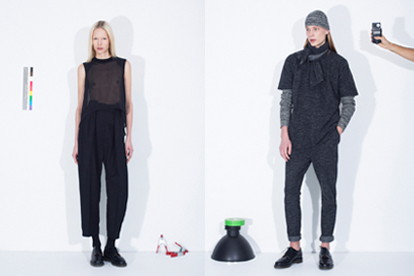
|
|
photo by honest by
|
|
HONEST BY
As we know, fashion industry is a really opaque sector where contractor prevent people from knowing production process, manufacturing details and working conditions. In this confuse world, making profit is the only target, exploiting people is not a problem.
Expect few labels, unfortunately today most of the well-known brand and manufacturers produce without any code of ethics and requirement of "Honest by". Bruno Pieters is a fashion designer who has anticipate future and in this way announced the millennium.The ex-fashion director of Hugo Boss took a sabbatical from fashion industry in south of India.
This experience profoundly affected his personal philosophy and inspires him a new way to approach fashion world : he began to work on a radical new concept. His new label, called "Honest by", have a 100% transparency policy and share every cost of the development of his products.
On the website, clients can find out production informations from yarn and button origin to fabric and manufacturing details. Every part of the collaboration process is transparent including the store mark up calculations and where is it made and by whom. But that's not the only policy of the label, "Honest by" conducts extensive research into the sources of the raw materials, traces back the origins of fabrics and trimmings used in the products to be certain that every element in each garment is as environmentally friendly as possible.
As Stella McCartney have done from the beginning of her career,"Honest by" choose not to distribute leather goods, or clothes that are made or trimmed with fur, shell or horn. The only animal products is wool and is either certified organic, recycled or sourced from selected farms in the UK. 20% of the profit of the collections will go to a charity.The collection is exclusively available online.
Joan Billing
www.honestby.com
|
|
|
|
|
EXHIBITION
|
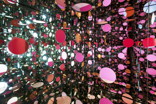
|
Yayoi Kusama
Yayoi Kusama's life have taken her from rural Japan to the New York art scene to contemporary Tokyo. Well-known for her repeating dot patterns, her art encompasses an astonishing variety of media, including painting, drawing, sculpture, film, performance and immersive installation. A must see at Tate Modern!
More
|
|
|
BOOK
|

|
Dior Couture
An incredible visual collaboration between Patrick Demarchelier, a famous fashion photographer and Interview Magazine Editor Fabien Baron ."Dior Couture is like art - they are the art pieces of a fashion house," Patrick Demarchelier says. "Each piece is unique and made by hand. We shot the book in so many different places - New York, London and Paris. I wanted to put couture in interesting situations and set different moods for each picture. That's why I chose such a wide range of models - the book is made by so many different things; different places, different make-up artists, different models.
Shop
|
|
|
EXHIBITION
|
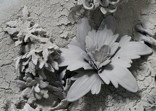
|
Swept Away
Dirt, ashes and dust are the subjects of Swept Away, an exhibition at New York's Museum of Arts and Design.Twenty six international artists have been selected . They all take the detritus of our every day life and transform it into poetic installations, painting, performances or objects.The Museum is focus on material and process and the field to discover with this subject is wide and provocative.
More
|
|
|
MORE TRENDS
|
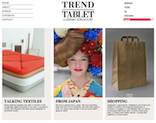
|
TREND TABLET
trendtablet.com explains how trends grow, evolve and flow, and helps us better understand and perceive how they interact in our daily lives.
this tool accessed for free is open to comments and new ideas, please contribute and be part of our network .Enjoy!
More
|
|
|
JOIN US
|
|
|
|
BOOK
|
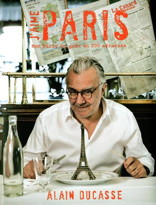
|
J'aime Paris
With his attractive book, J’aime Paris, Alain Ducasse shares some two hundred of his favorite addresses in the French capital, addresses which include grocery stores, cheese specialists, wine bars, tea rooms , boulangeries, as well as those traditional French "brasseries" full of charm .The book is not a traveller’s guide of three-star restaurants it is a fascinating compilation of places to visit in Paris to give you a "taste" of this gourmand city… It is a vibrant book ,full of colours and charm.
Shop
|
|
|
MAGAZINE
|
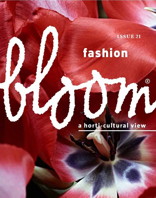
|
Bloom
Over the last few seasons we have seen flowers starting to bloom on textiles, experimental plants invading dresses and witnessed leaves whirling onto scarves.Therefore, we have created a magazine that is much like a bazaar, containing all the types of fashion that flowers have to offer, exploring their influences to the fullest.
Shop
|
|
|
|
CATALOGUE
|
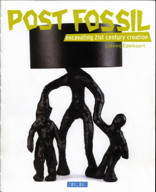
|
Post Fossil
Post Fossil. Excavating 21st century creation. This catalogue was printed on the occasion of the exhibition in Tokyo.
Shop
|
|
|
